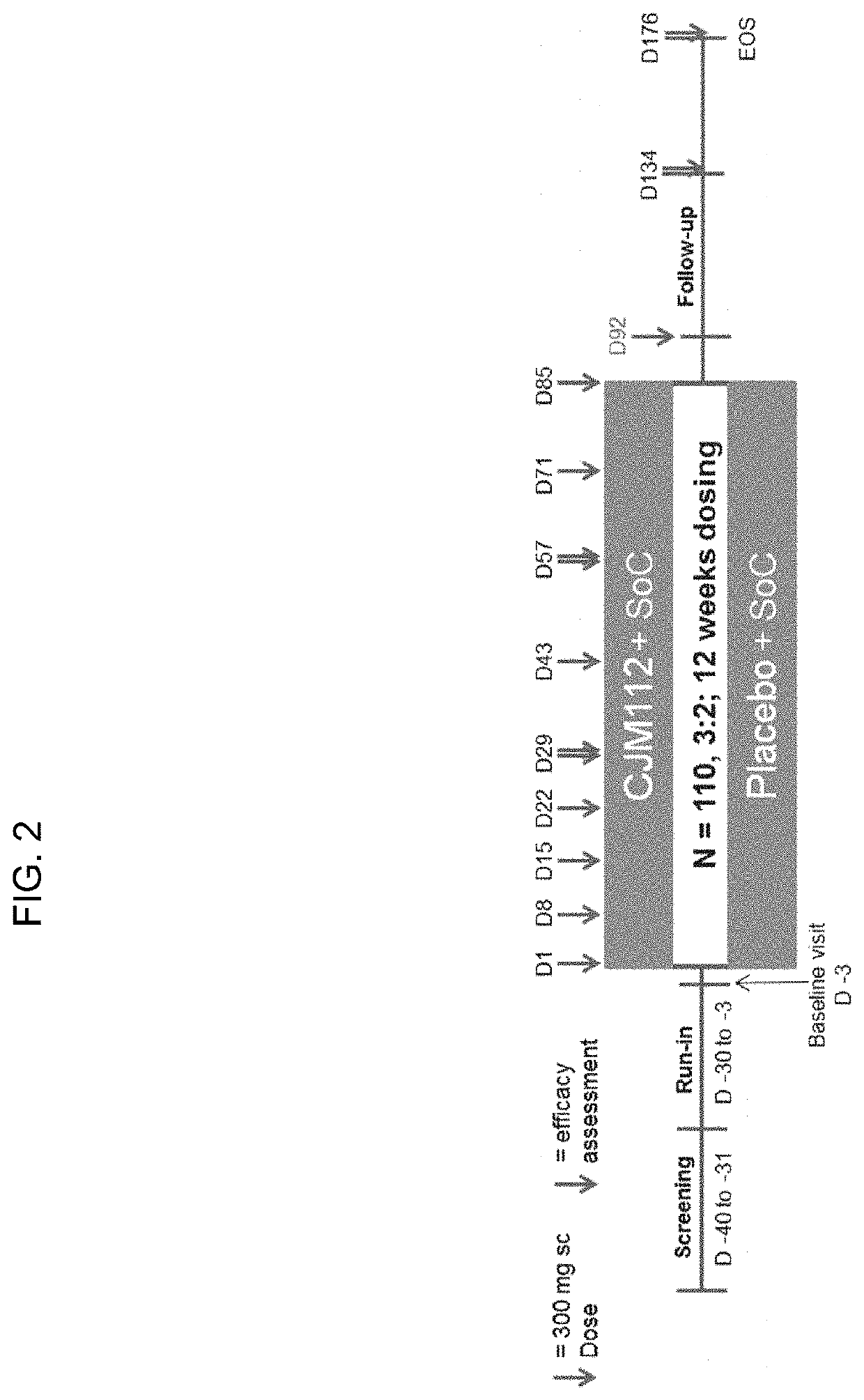Methods of selectively treating asthma using IL-17 antagonists
a selective treatment and asthma technology, applied in the field of asthma selective treatment, can solve the problems of no patient features have been proven to be conclusively predictive, and the il-17 pathway antagonizing therapy is not effective in a broad unstratified population of asthma patients, and achieve the effect of reducing the likelihood of adverse effects
- Summary
- Abstract
- Description
- Claims
- Application Information
AI Technical Summary
Benefits of technology
Problems solved by technology
Method used
Image
Examples
example 1
Analysis of Severe Asthmatic Patients Treated with Anti-IL-17A (AIN457) Identified a Distinct Responder Population
[0158]Asthma stratification efforts have predominantly focused on subgroups defined by levels of circulating and sputum eosinophils. In a recent study of anti-IL-17A treated severe asthma patients, post hoc unbiased analysis found that patients who responded to anti-IL-17A (i.e., >5% improvement in percent of predicted FEV1) had significantly lower levels of IgE (<150 / ul) than non-responders. Response to anti-IL-17A intervention was not associated with a specific eosinophil cut-off level.
1. Study Design
[0159]A study was conducted under clinicaltrials.gov identifier CAIN457D2204. This was a multicenter, double-blind, randomized, placebo-controlled study in subjects with severe asthma (GINA step 4 / 5) that were not adequately controlled despite treatment with high doses of inhaled and / or oral corticosteroids and long-acting beta agonists. The study consisted of a screening ...
example 2
Study to Assess the Efficacy and Safety of CJM112 in Patients with Inadequately Controlled Moderate to Severe Asthma
[0171]The purpose of this study is to determine whether CJM112, when added to existing therapy, displays the clinical efficacy and safety profile to support further development in patients with inadequately controlled moderate to severe asthma.
[0172]CJM112 cross-reacts with cynomolgus monkey and rat IL-17A, therefore, these species were selected for toxicological evaluation. In vitro blood compatibility analysis as well as in vivo safety pharmacology investigations, including neurobehavioral (functional observation tests), respiratory (blood gas analysis) and telemetric cardiovascular electrocardiogram (ECG) and blood pressure, were performed in the 13 week cynomolgus monkey study, and did not show any adverse reactions (data not shown). No non-specific tissue cross-reactivity was demonstrated when CJM112 was applied to normal human, cynomolgus monkey or rat tissues (d...
PUM
| Property | Measurement | Unit |
|---|---|---|
| concentration | aaaaa | aaaaa |
| volume | aaaaa | aaaaa |
| concentration | aaaaa | aaaaa |
Abstract
Description
Claims
Application Information
 Login to View More
Login to View More - R&D
- Intellectual Property
- Life Sciences
- Materials
- Tech Scout
- Unparalleled Data Quality
- Higher Quality Content
- 60% Fewer Hallucinations
Browse by: Latest US Patents, China's latest patents, Technical Efficacy Thesaurus, Application Domain, Technology Topic, Popular Technical Reports.
© 2025 PatSnap. All rights reserved.Legal|Privacy policy|Modern Slavery Act Transparency Statement|Sitemap|About US| Contact US: help@patsnap.com


